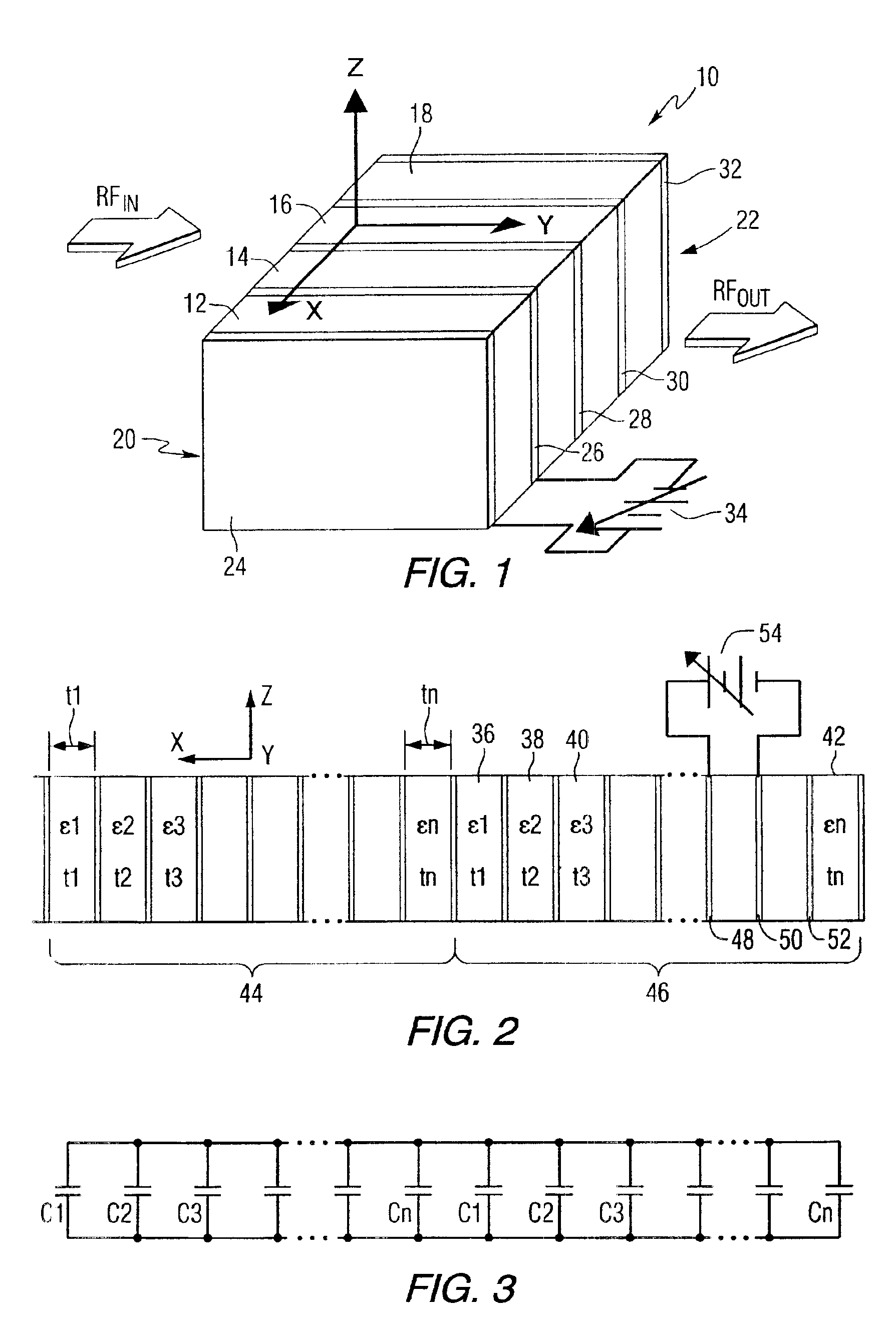Voltage tunable laminated dielectric materials for a coplanor waveguide
a technology of laminated dielectric materials and coplanar waveguides, which is applied in the direction of waveguides, waveguide type devices, high frequency circuit adaptations, etc., can solve the problems of low antenna efficiencies, high dielectric constants are not suitable, and complex fabrication of such devices
- Summary
- Abstract
- Description
- Claims
- Application Information
AI Technical Summary
Benefits of technology
Problems solved by technology
Method used
Image
Examples
Embodiment Construction
Referring to the drawings, FIG. 1 is an isometric view of an electronic device having a dielectric structure of laminated materials constructed in accordance with a preferred embodiment of the invention. The tunable dielectric device 10 comprises a multilayered structure of dielectric materials 12, 14, 16, 18 including two or more materials having different dielectric constants, and being laminated together to tailor the overall dielectric constant and tunability. One or more materials (e.g. 12 and 16) in the laminated structure are tunable dielectric materials usually with a high dielectric constant, low losses, and high tunability. For the purposes of this description, a high dielectric constant is greater than about 100, low loss materials have loss tangents (tan δ) of less than about 0.01, and tunability of greater than about 15% at 2 V / μm. The high dielectric constant, low loss and high tunability materials may be Ba1-xSrxTiO3 (BSTO), where x can vary between zero and one, and ...
PUM
| Property | Measurement | Unit |
|---|---|---|
| dielectric constant | aaaaa | aaaaa |
| dielectric constant | aaaaa | aaaaa |
| dielectric constant | aaaaa | aaaaa |
Abstract
Description
Claims
Application Information
 Login to View More
Login to View More - R&D
- Intellectual Property
- Life Sciences
- Materials
- Tech Scout
- Unparalleled Data Quality
- Higher Quality Content
- 60% Fewer Hallucinations
Browse by: Latest US Patents, China's latest patents, Technical Efficacy Thesaurus, Application Domain, Technology Topic, Popular Technical Reports.
© 2025 PatSnap. All rights reserved.Legal|Privacy policy|Modern Slavery Act Transparency Statement|Sitemap|About US| Contact US: help@patsnap.com



